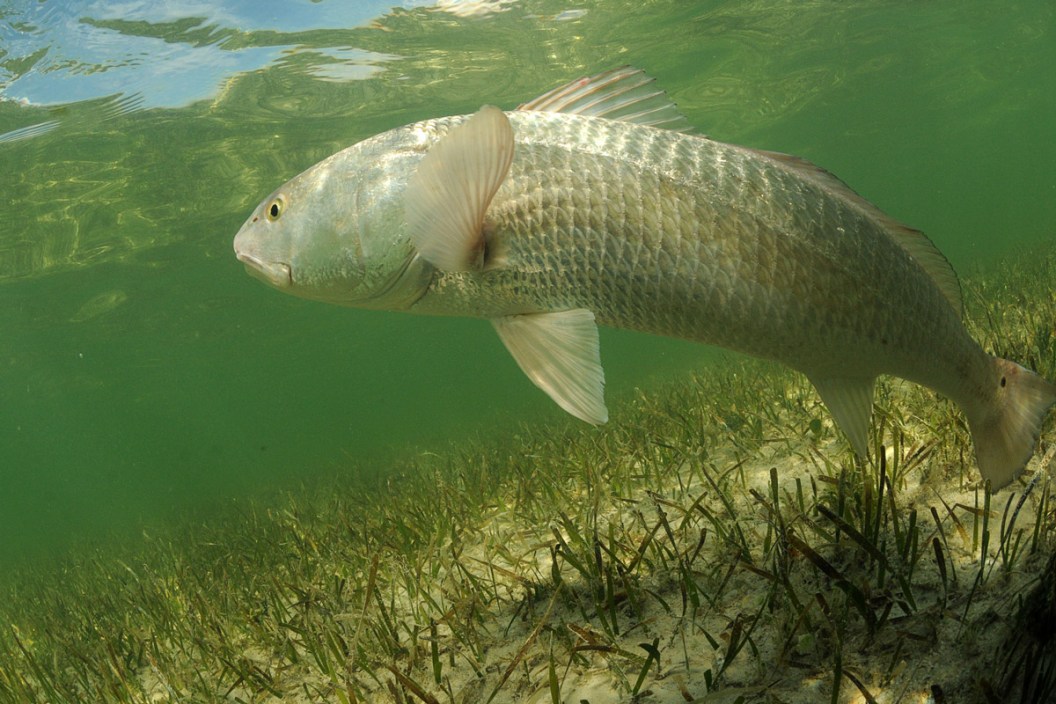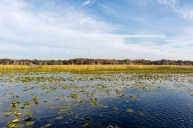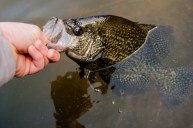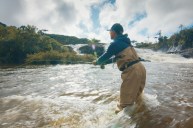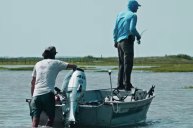Shopping and inshore fishing—any connection? Yeah, it's there. Think: Black Friday. Brave retail managers unlock entry doors and quickly sidestep the mad rush of impatient shoppers desperate for deep discounts and rare opportunities. Same store pretty much any day before or after finds shoppers trickling in at a moderate pace and then trickling out at closing time.
The difference? The uncommon, versus the ordinary. Timing your redfish pursuits parallels the latter. Specifically, redfish are a highly predictable lot and finding them simply involves knowing where they shop and when the store's open. That, of course, starts with peaking at their grocery list. Extreme high and low tides occasionally throw a little Black Friday into the mix, but that's another story for another day. For now, let's look at the common daily patterns that will keep you on the redfish bite.
Habitat Preferences
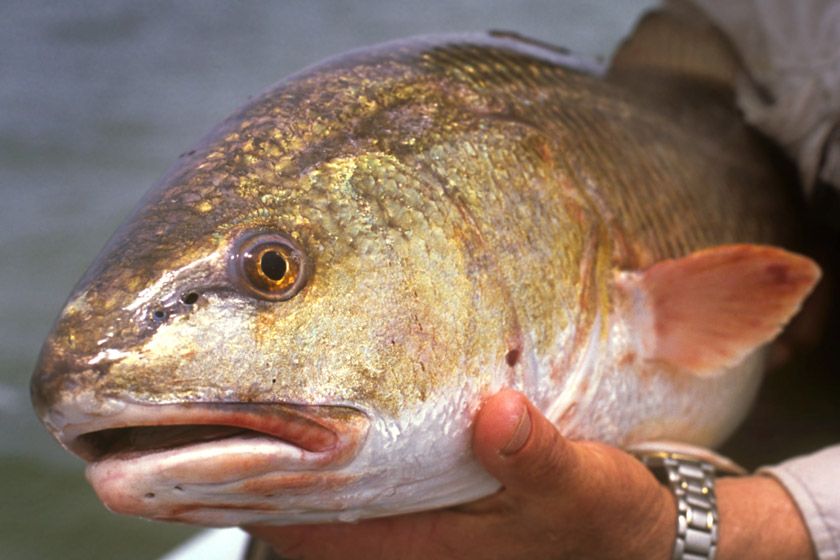
Getty: SteveClever
Far from picky, redfish will eat most any finfish, crustacean or invertebrate they can find. While the jumbo adult reds of 30-plus inches live offshore and chase larger prey, the smaller inshore fish love their shrimp, crabs, pinfish, finger mullet, and sardines.
Reds find such meals along mangrove edges, oyster bars, shallow rock outcroppings, marsh grass/cane, broad seagrass flats, and potholes (depressions scattered throughout those flats). There's plenty of crossover, but differences exist.
Baitfish like scaled sardines, threadfin herrring, pinfish and juvenile "peanut" pogies (menhaden) are most common over grass flats—either open bays or adjacent to mangrove shorelines—while the pogies are also found along Gulf coast beaches and barrier islands. Reds root up lots of crustaceans amid dense grass beds, but those oyster bars, rocks, and mangrove edges hold the concentrated buffets.
Ebb and Flow
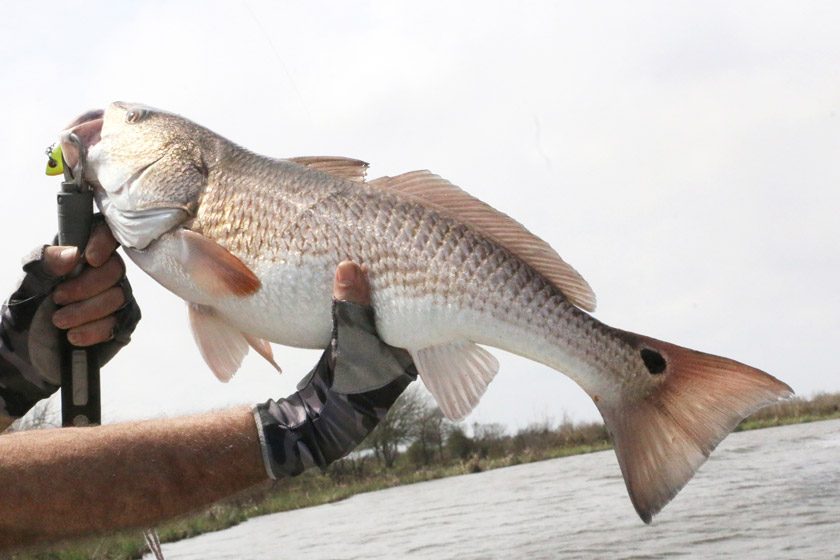
Getty: JLFCapture
Here's the tidal connection: Shoppers think nothing of strolling across parking lots and sidewalks to reach a store's entry point. Anytime during business hours, the course is consistent, dependable. Now, imagine that pavement dropping several feet from the storefront, then rising to the entry level and repeating this up-and-down routine daily. This is how tides affect predators like redfish.
Rise to the Occasion: Incoming, or "rising" tides allow fish to explore oyster bars and rock outcroppings that go bone dry during low tide. This stage also leads the fish to, not only mangrove edges, but deep into the tangled mangrove roots that extend above the bottom and harbor loads of tasty meals. Grass flats, while more gradual in slope, see redfish moving progressively higher onto the "crown" to reach fertile feeding areas. Facing into the oncoming water ensures optimal access to the tide-borne meals.
On the Fall: Falling tides reverse the movements and ultimately send reds toward their low-water hangouts. The troughs and holes throughout grass flats, cuts and channels along their edges and the current-carved dips at the mouths of coastal creeks are some of your best bets. Similarly, marsh drains from the Carolina sounds to the Mississippi Delta are falling tide gold mines. When tides pull minnows, finger mullet, crabs and shrimp through gaps in the emergent marsh vegetation, reds stake out these exit ramps to leverage the focused food delivery.
In-Between: Current equals feeding opportunities, as the water pushes and pulls bait schools and other forage into predictable positions. Some prefer high water, as it avails more of the shallower targets; others like the lower water because it concentrates fish. Either way, the transitional periods often produce the most aggressive feeding as redfish relish newly developing tidal opportunities, or sense the impending conclusion of their current chow session.
Bottom of the Barrel: Low, slack tide is the most unsexy time in fishing, but don't assume the minimized access implies diminished opportunity. Fact is, reds are like puppies—they're always hungry. They know they have to work harder when the water's low and still, but if something appealing crosses their radar, it's usually an easy sell. Just consider the navigational challenges of treacherously low water with either hull-damaging rocks and shell bars, or oatmeal mud that'll grip and hold a wayward boat. This is when kayaks really shine, as they skim across skinny spots that are too soft for wading.
Take advantage of the low water to observe the area, mentally map it or snap a photo to remember the major drains, high spots and depressions. These, along with prominent grass patches, isolated rock outcroppings or any potential feeding spot are worth noting, as they'll dial in your efforts once the water returns.
Top Redfish Baits
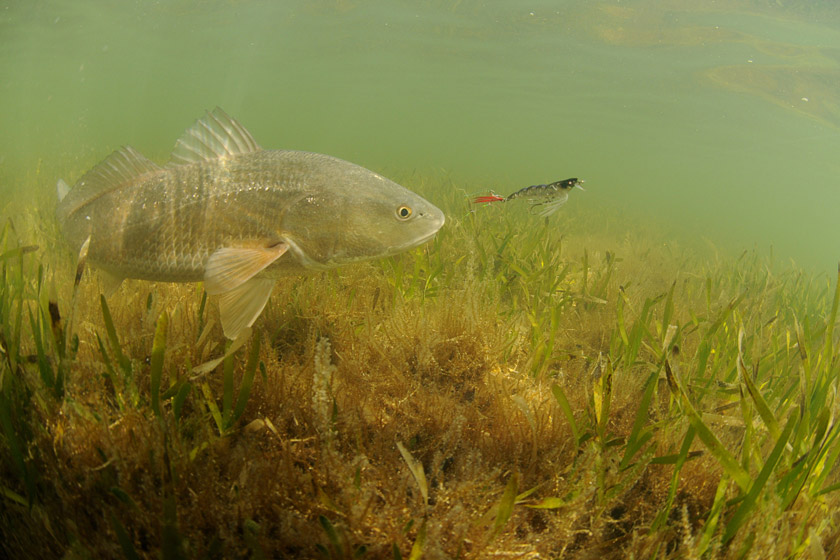
Getty: FtLaudGirl
Typically found in schools or small pods, reds live with feeding competition that says "Eat now, or lose it to a schoolmate." No surprise that free-lining or floating live shrimp or baitfish works wonders. The float option keeps baits from burying in sea grass or hiding in and around oyster bars or rocks.
During low tide, soaking cut mullet, threadfins, or pogies in deeper holes and troughs—ideally chummed with smaller chunks—will interest any reds eagerly anticipating the water's return. Once you find 'em, that feeding competition often sparks a spirited rally.
When prospecting broad areas, nothing beats a weedless gold spoon. Casting like a bullet, sparkling like a baitfish and easily traversing any habitat, this is your No. 1 search bait. Spoons like to spin, so add a split ring and swivel to prevent line twist.
For targeting particular spots such as potholes, oyster bar points, marsh drains or mangrove edges, reds welcome topwater walkers, light jigs with grub or paddle tails, soft plastic jerkbaits on belly-weighted hooks and synthetic shrimp. Rigging the latter—or a jig—under a popping or clacking style cork creates noisy commotion that attracts reds—another good search strategy, as well as target-focused presentations.
Last point: Present artificials in the most natural manner possible. That means casting up-current and bringing your bait with the flow. For one thing, your bait will look more authentic, but bring a bait up from behind the fish and you run the risk of goosing a red and spooking the school.
